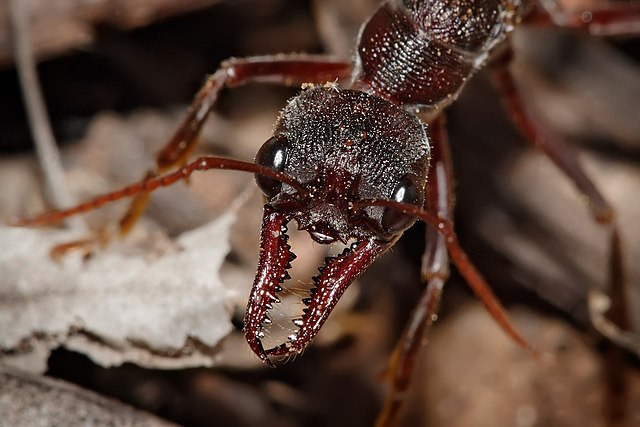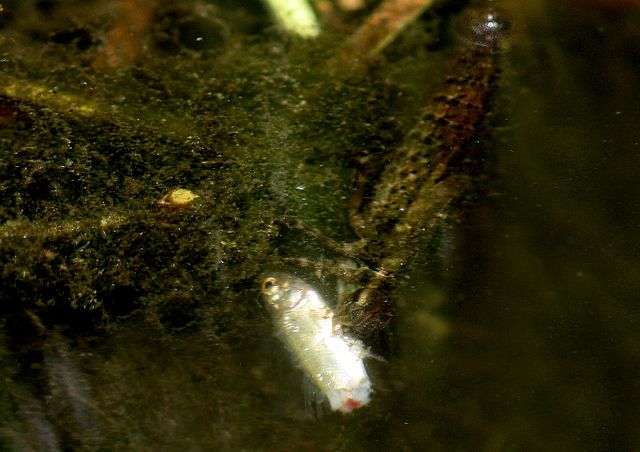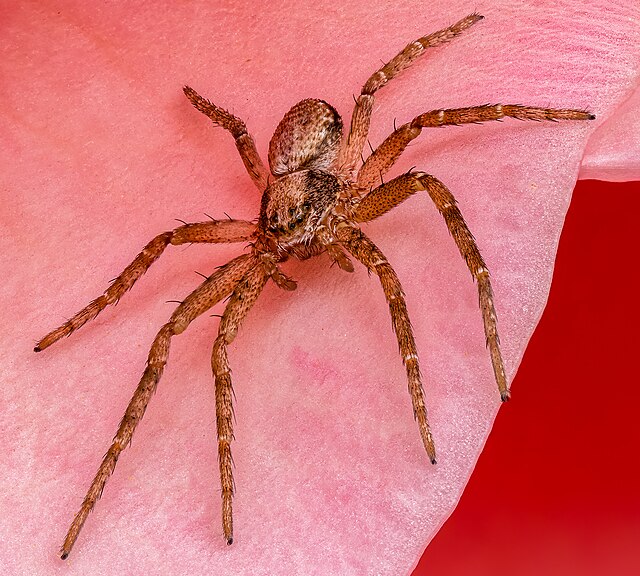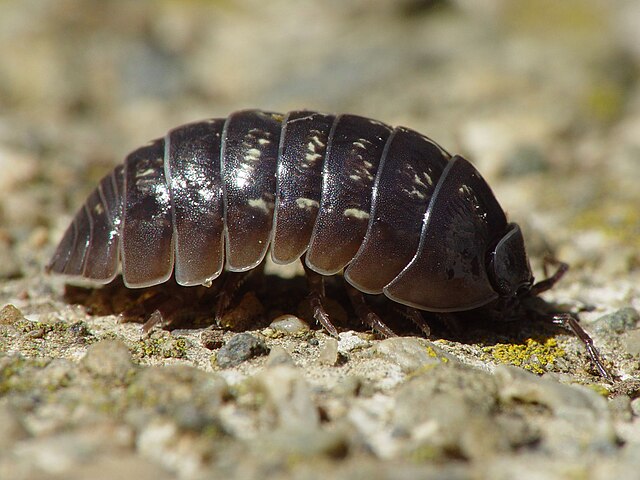Insects have mouthparts that may vary greatly across insect species, as they are adapted to particular modes of feeding. The earliest insects had chewing mouthparts. Most specialisation of mouthparts are for piercing and sucking, and this mode of feeding has evolved a number of times independently. For example, mosquitoes and aphids both pierce and suck, though female mosquitoes feed on animal blood whereas aphids feed on plant fluids.
The trophi, or mouthparts of a locust, a typical chewing insect: 1 Labrum 2 Mandibles; 3 Maxillae 4 Labium 5 Hypopharynx
The mandibles of a bull ant
European honeybee (Apis mellifera) lapping mouthparts, showing labium and maxillae
Dragonfly nymph feeding on fish that it has caught with its labium and snatched back to the other mouthparts for eating. The labium is just visible from the side, between the front pairs of legs.
Insects are hexapod invertebrates of the class Insecta. They are the largest group within the arthropod phylum. Insects have a chitinous exoskeleton, a three-part body, three pairs of jointed legs, compound eyes, and a pair of antennae. Insects are the most diverse group of animals, with more than a million described species; they represent more than half of all animal species.
Insect
Insect: Six legs, three-part body (head, thorax, abdomen), up to two pairs of wings
Spider: eight legs, two-part body
Woodlouse: seven pairs of legs, seven body segments (plus head and tail)








